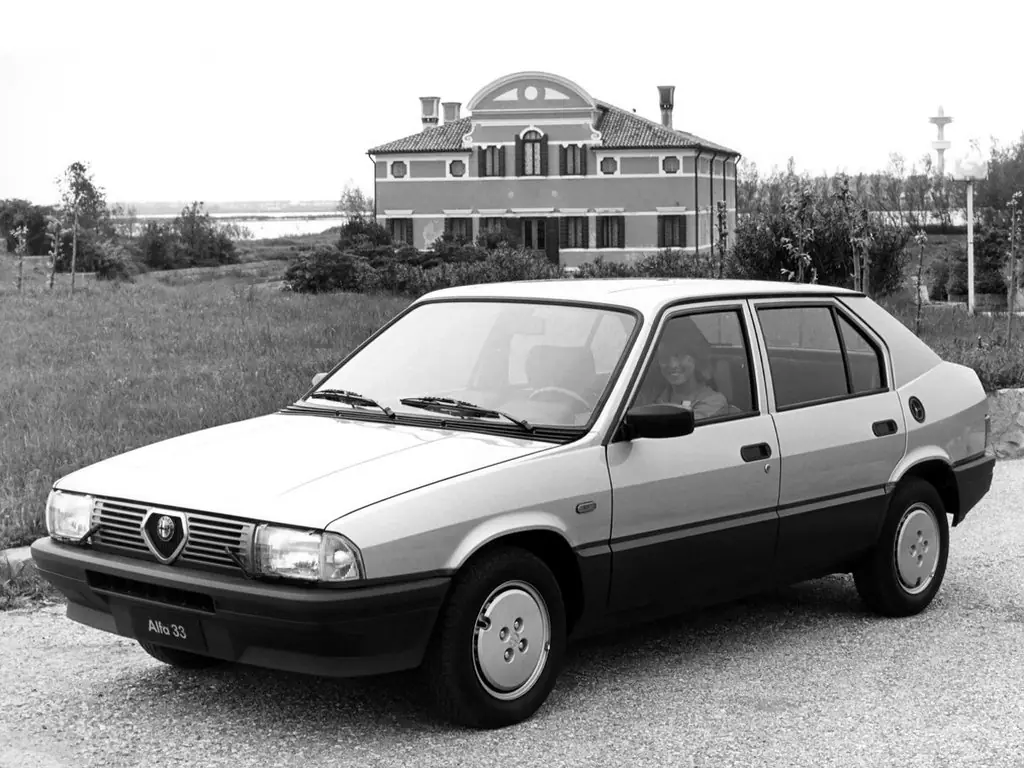Alfa Romeo’s entry into the 1980s marked a pivotal shift in their approach to car manufacturing. The 33, launched in 1983, carried the weight of the company’s illustrious racing pedigree while answering the growing demand for practical family transport. Named after the legendary Tipo 33 race cars, this compact liftback proved that practicality needn’t come at the expense of driving pleasure.
The 905 series represented more than just another entry in the competitive family car segment. It showcased Alfa Romeo’s ability to adapt their sporting DNA into a format that suited the changing automotive landscape of the 1980s, delivering a unique blend of Italian flair and everyday usability.
Italian Engineering Meets Practicality
The heart of the Alfa 33 beats with a characteristically Italian rhythm. Its 1.3-liter engine, producing 75 horsepower, might seem modest by today’s standards, but the way it delivers its power captures the essence of Alfa Romeo’s engineering philosophy. The engine’s eager response and willingness to rev showcase the sporting heritage hiding beneath its practical exterior.
Each gear change through the five-speed manual transmission feels purposeful and mechanical, connecting driver to machine in a way that modern cars rarely achieve. The front-wheel-drive layout, while a departure from Alfa’s traditional rear-drive setup, delivers surprising agility and confident handling.
“My ’84 33 still pulls like a train above 4,000 rpm. The sound of that boxer engine is unique – nothing else in its class sounds or feels quite like it.” – Marco Rossi, vintage Alfa enthusiast
The chassis balance strikes an impressive compromise between comfort and control. Body roll is well contained, and the steering provides the kind of feedback that reminds you why Alfa Romeo earned its sporting reputation in the first place.
Design Philosophy
The 33’s exterior design represents a masterful blend of aerodynamic efficiency and visual drama. Its compact dimensions – 4,015mm long and 1,612mm wide – mask a surprisingly spacious interior, while the distinctive wedge profile sets it apart from contemporary offerings.
Key design elements that defined the 33’s character include:
- distinctive front grille with the iconic Alfa Romeo shield;
- sleek, aerodynamic profile with a drag coefficient of 0.36;
- practical liftback design offering excellent cargo access;
- characteristically Italian attention to surface detailing;
- distinctive wraparound bumpers integrating seamlessly with the body.
The interior continues the theme of practical sophistication, with a driver-focused cockpit that epitomizes the Italian approach to ergonomic design.
Daily Living with the 33
In daily use, the 33 reveals its dual personality. The liftback configuration offers remarkable versatility, with folding rear seats expanding the already generous cargo space. The cabin provides comfortable accommodation for four adults, though taller passengers might find the rear headroom slightly compromising.
“I’ve owned my 33 for 15 years now. It’s been my daily driver through three jobs and two kids. The practicality is there, but it’s the character that keeps me from selling it.” – David Turner, long-term owner
The visibility is excellent by 1980s standards, aided by large greenhouse and thin pillars. The driving position feels natural, with major controls falling easily to hand – a testament to Alfa Romeo’s attention to driver ergonomics.
Performance Heritage
While not designed as a sports car, the 33 carries unmistakable sporting genes. The chassis demonstrates remarkable poise when pushed, with a level of driver engagement that betrays its practical family car positioning.
Performance highlights worth noting:
- 0-60 mph time of 13.5 seconds;
- top speed of 102 mph;
- precise five-speed manual gearbox;
- responsive rack-and-pinion steering;
- well-balanced suspension setup.
The braking system, while basic by modern standards, provides good pedal feel and progressive stopping power. The front-wheel-drive layout delivers predictable handling characteristics without diluting the engaging driving experience Alfa Romeo was known for.
The Legacy Lives On
Looking back, the Alfa Romeo 33 (905) represents a crucial chapter in the brand’s evolution. It proved that practical family transport could retain character and driver appeal, setting a template that influenced subsequent Alfa Romeo models.
The 33’s ability to combine everyday usability with engaging dynamics demonstrates why these cars continue to attract enthusiasts. It’s a reminder that compromise doesn’t necessarily mean sacrifice – especially when Italian passion meets practical design.
Pros and Cons
| Advantages | Disadvantages |
|---|---|
| Distinctive Italian styling with timeless appeal | Limited rear headroom for taller passengers |
| Engaging driving dynamics and responsive engine | Basic safety features by modern standards |
| Practical liftback design with good cargo space | Parts availability can be challenging |
| Excellent visibility and driving position | Rust protection less effective than competitors |
| Strong enthusiast community support | Interior materials show their age |
| Relatively simple mechanics for DIY maintenance | Fuel economy modest by modern standards |
| Historical significance and growing collector value | Limited dealer network for specialist service |
The Alfa Romeo 33 (905) represents a unique moment in automotive history when practical considerations began to influence even the most characterful manufacturers. While it may not match modern cars in terms of refinement or safety features, it offers an authentic driving experience that many contemporary vehicles struggle to replicate.

